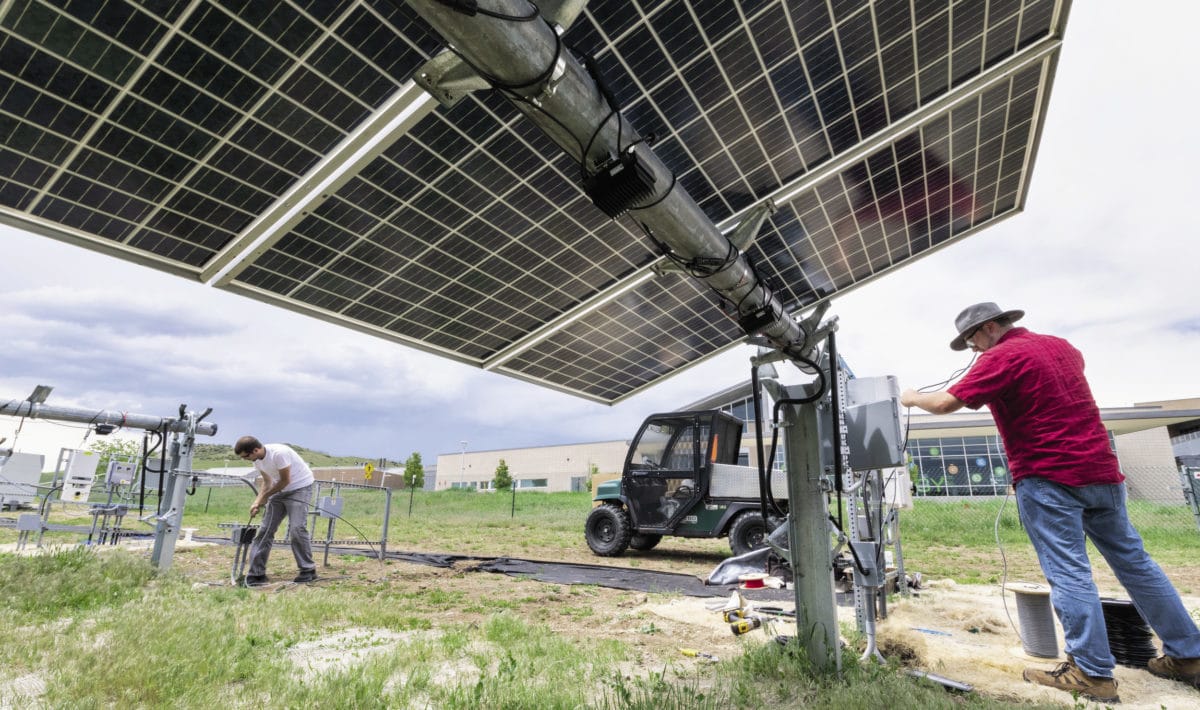With the election just weeks away, President Donald Trump has issued a proclamation once again imposing trade tariffs on bifacial solar panels, effectively rolling back the exemption he originally granted in June of 2019. As previously reported, the proclamation is the latest skirmish in the president’s ongoing battle with the U.S. solar industry over the panels, which produce power on both sides and are increasingly used in large utility-scale projects.
Quietly released on Oct. 10, the proclamation’s main argument is that “bifacial modules are likely to account for a greater share of the market in the future and can substitute for monofacial products in the various market segments, such that exempting imports of bifacial modules from the safeguard tariff would apply significant downward pressure on prices of domestically produced (bifacial) modules.”
Trump also cited the impact of bifacial’s growing share of the U.S. market as his reason for putting a hold on the fourth year step-down of the solar tariffs from 20% to 15%, resetting the rate for all imported solar panels instead at 18%. When first imposed in 2018 as part of Trump’s trade war with China, the tariffs were set at 30%, to be decreased 5% each year for four years.
Quoted in Bloomberg, Abigail Ross Hopper, president and CEO of the Solar Energy Industries Association (SEIA), said Trump’s proclamation “counters critical needs of our country right now, jeopardizing jobs, economic recovery in the face of a pandemic and a clean environment.” SEIA would, she said, “evaluate every option to reverse this harmful approach.”
Nextracker CEO Dan Shugar called the tariffs, “an outright tax on consumers of solar energy in the U.S,” in recent testimony to Congress.
Conflicts over the tariff exemption for bifacial panels started almost as soon as it was granted, with the Office of the U.S. Trade Representative (USTR) removing the exemption four months later, in October 2019. But, the U.S. Court of International Trade upheld the exemption two months later.
The USTR made another run at lifting the exemption in April, but was again rebuffed by the trade court in June.
Trump’s new proclamation is scheduled to go into effect on Oct. 25 — 15 days after it was issued — but, again, with the election looming, what its impact will be remains uncertain. The tariffs have slowed price reductions on panels in the U.S. and, according to SEIA, cost the industry 62,000 jobs, even as some Chinese solar companies set up shop in the U.S.
Still, with solar now recovering from its Covid-19 downturn in the second quarter, industry forecasts remain optimistic. SEIA’s most recent market outlook with analyst Wood Mackenzie anticipates 100 GW of new solar to be installed in the U.S. between 2021 and 2025.
This content is protected by copyright and may not be reused. If you want to cooperate with us and would like to reuse some of our content, please contact: editors@pv-magazine.com.








I can’t wait to get back to a sane timeline.
Maybe Trump should have traded a few military toilets for a new GW scale PV manufacturing facility.
Vote!